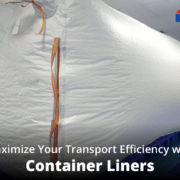Exploring the Benefits of Liquid Transport Tanks in Modern Logistics
Transporting bulk liquids across vast distances has always posed significant challenges, primarily due to the need for specialized containers that can handle large volumes while ensuring safety and efficiency. Traditionally, industries relied on standard methods like drums, ISO tanks, or IBCs (Intermediate Bulk Containers) for liquid transportation. However, a game-changing solution has emerged over the past few decades: Flexitanks, liquid transport tanks.
What are Flexitanks?
Flexitanks are large, liquid transport tanks (flexible containers) made from multiple layers of polyethylene and an outer covering of woven polypropylene. They are designed to fit inside standard 20-foot shipping containers, converting them into efficient bulk liquid transportation units. Capable of holding between 16,000 to 24,000 liters of liquid, flexitanks are quickly becoming the preferred choice for many industries, including food, chemicals, and pharmaceuticals.
Advantages of Using Liquid Transport Tanks
-
Cost-Effectiveness: Flexitanks significantly reduce transportation costs compared to traditional methods. They eliminate the need for returning empty containers, as they are single-use and disposable. This reduces shipping expenses by allowing companies to focus only on outbound logistics, avoiding the additional costs associated with the return of ISO tanks or other reusable containers.
-
Increased Payload: With flexitanks, businesses can maximize their cargo payload. The flexible design allows for more efficient use of container space, enabling the transportation of up to 30% more liquid than traditional containers of the same size. This increased capacity translates to fewer shipments and reduced freight costs.
-
Versatility: Flexitanks can transport a wide variety of non-hazardous liquids, including food-grade oils, wines, fruit juices, pharmaceuticals, and certain chemicals. Their adaptability makes them a valuable asset for industries with diverse liquid transportation needs.
-
Ease of Use: Installing a flexitank inside a shipping container is a straightforward process that requires minimal labor and time. Once the liquid is offloaded at the destination, the flexitank can be easily disposed of, simplifying the logistics chain and saving on labor costs associated with cleaning and returning traditional containers.
-
Environmental Benefits: While flexitanks are single-use, many manufacturers are committed to sustainability, offering recycling programs to minimize environmental impact. Additionally, the reduction in return freight trips contributes to lower carbon emissions, aligning with global efforts to reduce the transportation industry’s ecological footprint.
The Future of Liquid Bulk Transportation
The shift towards flexitanks, liquid transport tanks, signifies a broader trend in the logistics industry: the move towards more flexible, cost-effective, and sustainable solutions. As global trade continues to expand and the demand for efficient transportation grows, innovations like flexitanks will play a pivotal role in meeting these needs.
In conclusion, Fluid Flexitanks are revolutionizing the way bulk liquids are transported, offering numerous advantages over traditional methods. With their cost-effectiveness, increased payload, versatility, and ease of use, they provide a compelling alternative for industries looking to optimize their logistics operations. As technology continues to advance, we can expect flexitanks to become even more integral to the global supply chain, supporting businesses in their quest for efficiency and sustainability.











